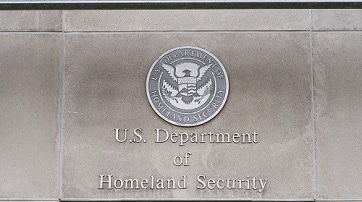DHS Has Some Serious Security Failures, Report FindsDHS Has Some Serious Security Failures, Report Finds
From running outdated versions of Windows, to not having effective backup, the US Department of Homeland Security has some serious security failings, according to a new report.

The US Department of Homeland Security (DHS) has serious cybersecurity problems, according to a recent report by the agency's watchdog -- the Office of Inspector General (OIG).
The OIG's investigation came after an executive order on cybersecurity was signed last May, which mandated that federal agencies audit their systems for vulnerabilities. This order was seen as a direct response to the numerous breaches that the US government has suffered over the past several years. (See US Government Leads World in Data Breaches .)
In its audit, the OIG tested DHS's ability to identify, protect, detect, respond to and recover from cybersecurity issues.

(Source: iStock)
In the report, the OIG found that DHS was using unsupported operating systems in routine work, and the agency also had not installed key security patches designed to protect against "critical" and "high-risk" vulnerabilities. Additionally, it did not monitor the software licenses for unclassified systems.
As an example, inspectors found the department using unsupported Windows 2003 Server software in systems that were in use at DHS headquarters, the Coast Guard and the Secret Service.
The Federal Emergency Management Agency (FEMA) was found to use unsupported Windows 7 in some of its workstations.
Microsoft Windows 8.1 and Windows 7 workstations were found to be vulnerable to the WannaCry exploit, and had not been patched. Patches for Adobe Flash were also not installed.
In Windows 2008 and 2012 operating systems, some patches that dated to 2013 had not been applied. Java, Internet Explorer, and Sidebar applications had not been patched either.
Overall, investigators found 64 vulnerable systems -- 48 unclassified and 16 national security -- on the department's network lacked the "authority to operate," according to the report. Worryingly, more than a dozen of these were storing highly sensitive classified information. Complete information about these systems was not maintained by the departments operating them to remediate security weaknesses in a timely manner.
The report did not specify which particular federal agencies where operating the vulnerable classified systems. However, it did note that FEMA had 15 unclassified systems that lost their authority to operate.
The fundamentals of network security are being redefined -- don't get left in the dark by a DDoS attack! Join us in Austin from May 14-16 at the fifth-annual Big Communications Event. There's still time to register and communications service providers get in free!
The investigation did find that DHS had met the OIG's standards to respond to security attacks, but did not meet those that were involved in its ability to recover from these types of attacks.
In recovery efforts, OIG found that contingency plans for DHS IT systems were never tested. It also found that proper procedures for handling sensitive data had not been developed. Additionally, the investigation found no alternative data center was available to carry on if a distributed denial of service (DDoS) attack had been implemented.
In the report, DHS noted that it concurred with the OIG's findings, and made a pledge to resolve them by September.
Related posts:
— Larry Loeb has written for many of the last century's major "dead tree" computer magazines, having been, among other things, a consulting editor for BYTE magazine and senior editor for the launch of WebWeek.
Read more about:
Security NowAbout the Author
You May Also Like




